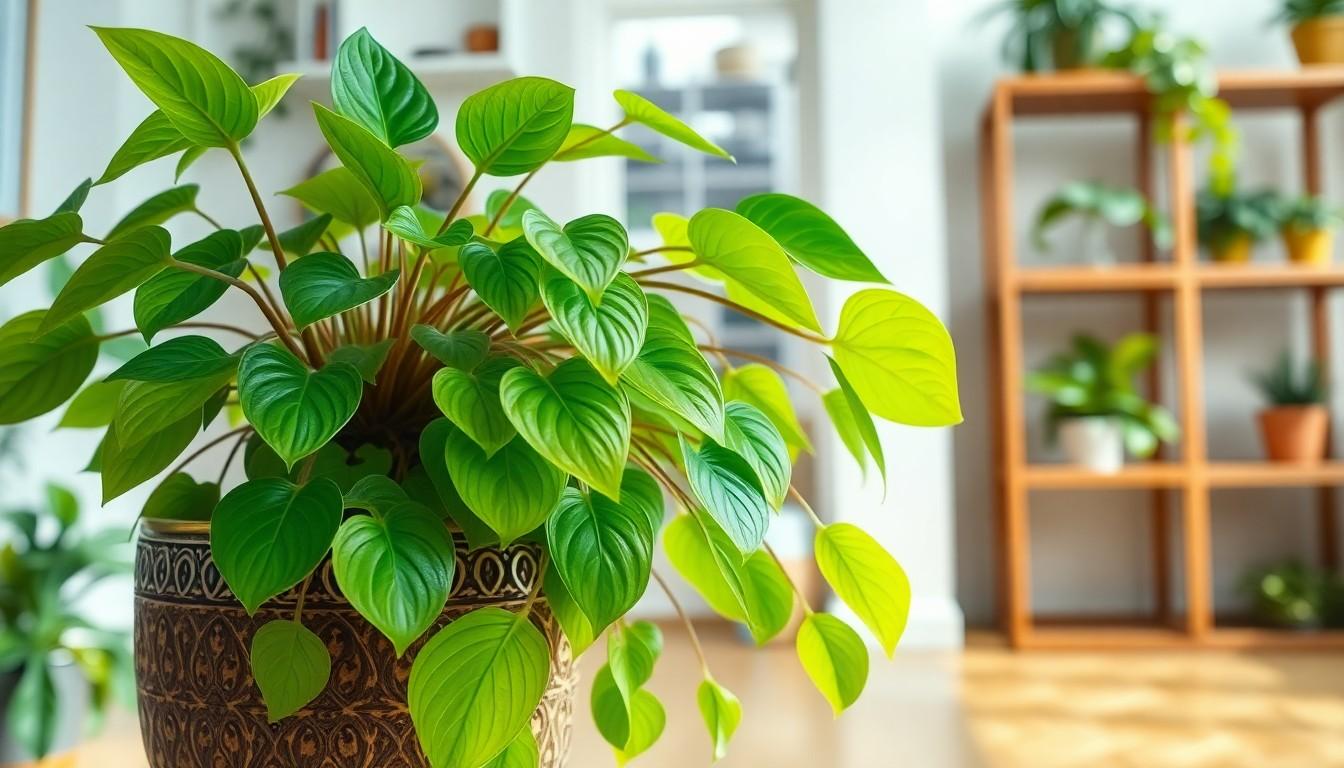The Best Fluffy Pancakes recipe you will fall in love with. Full of tips and tricks to help you make the best pancakes.

How to Take Care of a Pothos Plant: Tips for Thriving Greenery in Your Home
Pothos plants are like the overachievers of the plant world. They thrive on neglect, making them the perfect companion for anyone who’s ever accidentally killed a cactus. With their heart-shaped leaves and trailing vines, these green beauties can transform any space into a lush oasis. But don’t let their low-maintenance reputation fool you; a little TLC goes a long way in keeping them happy and healthy.
Whether you’re a seasoned plant parent or a newbie with a black thumb, learning how to care for a pothos plant is a breeze. From light requirements to watering tips, this guide will equip you with everything you need to ensure your pothos thrives. So grab your gardening gloves and get ready to impress your friends with your newfound plant prowess—because who wouldn’t want to be the proud owner of a thriving pothos?
Understanding Pothos Plants
Pothos plants are popular houseplants known for their adaptability and ease of care. Their appealing aesthetics and air-purifying qualities make them favorites among plant enthusiasts.
Common Varieties
Several distinct varieties of pothos plants exist. The Golden Pothos showcases vibrant variegation with yellow and green leaves. Another popular option, the Marble Queen Pothos, features striking white and green marbled leaves. Neon Pothos, with its bright, chartreuse coloration, adds a pop of color to any space. Each variety requires similar care, allowing for diversity without complicating maintenance.
Ideal Growing Conditions
Pothos plants thrive in various environments. They perform well in indirect sunlight but tolerate low light conditions. Temperatures between 65°F and 85°F provide optimal growth. High humidity levels support their lush foliage, yet they adapt to drier air. Regularly rotating the plant ensures even growth and prevents uneven stretching toward light sources.
Watering Your Pothos

Watering plays a vital role in the health of a pothos plant. Finding the right balance ensures vibrant growth and lush foliage.
Signs of Overwatering
Overwatering may damage a pothos, leading to yellowing leaves and root rot. Leaves might feel mushy or soft, indicating excessive moisture around the roots. Wilting, despite saturated soil, suggests the plant struggles to absorb water. A musty odor emanating from the pot can signal root decay. Always ensure that pots have drainage holes to prevent standing water.
Signs of Underwatering
Underwatering affects pothos health, causing leaves to curl or become crispy. Yellowing between leaf veins may signal that it needs water. Stunted growth often occurs when moisture levels drop. Dry soil and visible potting mix can indicate thirsty roots. Checking the soil moisture regularly helps maintain adequate hydration levels.
Light Requirements for Pothos
Pothos plants thrive best in specific light conditions. Understanding their light needs helps ensure vibrant growth.
Best Light Conditions
Bright indirect light promotes lush growth in pothos. However, these plants also tolerate low light, making them versatile for various indoor settings. Areas near windows with filtered sunlight create ideal conditions. Although pothos prefer bright environments, they can adapt to lower light levels without significant issues. Consistent exposure to bright, indirect light enhances leaf coloration and encourages faster growth.
Dealing with Low Light
Pothos adapt well to low light but exhibit slower growth in such conditions. Leaves may become smaller and less vibrant if light levels drop significantly. Regular monitoring of plant health is essential when placed in dim areas. Consider rotating the plant every few weeks to encourage even growth on all sides. If leaf discoloration occurs, moving the plant to a brighter location often resolves the issue. Providing supplemental light sources, such as grow lights, can further support growth in low-light scenarios.
Soil and Fertilization
Proper soil and fertilization are key for healthy pothos plants. Selecting the right growing medium directly impacts their growth and overall vibrancy.
Choosing the Right Soil
A well-draining potting mix works best for pothos plants. Organic blends containing peat moss, perlite, and vermiculite support good aeration. In addition, the soil should retain moisture without becoming too soggy, preventing root rot. Consider using a mix designed for houseplants, as these often provide the necessary moisture balance. Checking soil drainage features is crucial to ensure roots are not waterlogged.
Fertilizing Tips
Fertilizing pothos plants promotes vibrant growth and lush foliage. During the growing season, apply a balanced liquid fertilizer every 4-6 weeks. Dilute the fertilizer to half strength, avoiding any fertilizer burn. Selecting a balanced NPK ratio of 20-20-20 works effectively for pothos. In the fall and winter months, reduce fertilization frequency or stop altogether, allowing the plant to rest. Monitoring plant health helps determine if adjustments are necessary.
Pruning and Propagation
Pruning and propagation are essential practices for maintaining the health and aesthetics of pothos plants. They help control growth and rejuvenate the plant.
When to Prune
Pruning pothos plants encourages full, bushy growth. Conduct pruning in spring or early summer, as these seasons support new growth. Remove any dead or yellowing leaves regularly to enhance appearance. Cut back leggy vines for a more balanced shape, ensuring you prune just above a leaf node for optimal results. Regular pruning can also prevent overgrowth, allowing for better light and air circulation, which is crucial for maintaining plant vitality.
Methods of Propagation
Pothos plants propagate easily through stem cuttings. Select healthy stems with at least two to three leaves, and use sharp, clean scissors for a clean cut. The cuttings can root in water or soil, with water propagation recommended for monitoring root growth. Place cuttings in a jar of water, ensuring the leaves stay above the surface. Change the water weekly for best results. Alternatively, bury cuttings in a well-draining potting mix, maintaining consistent moisture for quick rooting. Both methods yield success, allowing for a thriving pothos collection.
Conclusion
Caring for a pothos plant can be a rewarding experience that enhances any living space. With its resilience and adaptability it thrives even with minimal attention. By understanding its specific needs for light watering and soil conditions plant owners can ensure their pothos remains vibrant and healthy. Regular monitoring and proper maintenance practices like pruning and propagation can further enhance its growth and aesthetic appeal. Whether one is a seasoned plant enthusiast or just starting out a pothos plant offers a perfect blend of beauty and ease of care. Embracing these care techniques will lead to a flourishing plant that brings joy for years to come.
